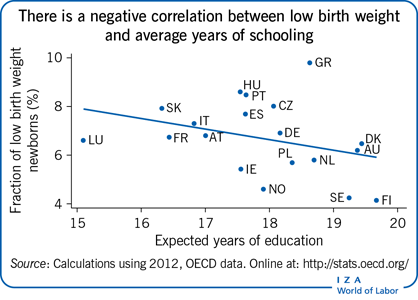Elevator pitch
Ample empirical evidence links adverse conditions during early childhood (the period from conception to age five) to worse health outcomes and lower academic achievement in adulthood. Can early-life medical care and public health interventions ameliorate these effects? Recent research suggests that both types of interventions may benefit not only child health but also long-term educational outcomes. In some cases, the effects of interventions may spillover to other family members. These findings can be used to design policies that improve long-term outcomes and reduce economic inequality.

Key findings
Pros
An array of medical treatments and public health interventions provided during early childhood results in better health in childhood and adulthood.
Early-life medical treatments and public health interventions improve academic achievement later in life.
At-risk children especially benefit from these interventions, which may reduce inequality.
The benefits of early-life interventions seem to extend to other family members as well.
It may be more productive to shift the policy discussion from increasing the number of prenatal or postnatal nurse home visits to the effects of the timing and quality of care.
Cons
For low-risk children, the evidence on the benefits of early-life medical interventions is mixed.
While certain public health interventions have well-documented health returns, little is known about their impact on human capital accumulation.
More research is needed to understand the causal pathways leading to the positive gains from early-life interventions.
More research is needed to understand the interactions between the effects of medical care and public health interventions.